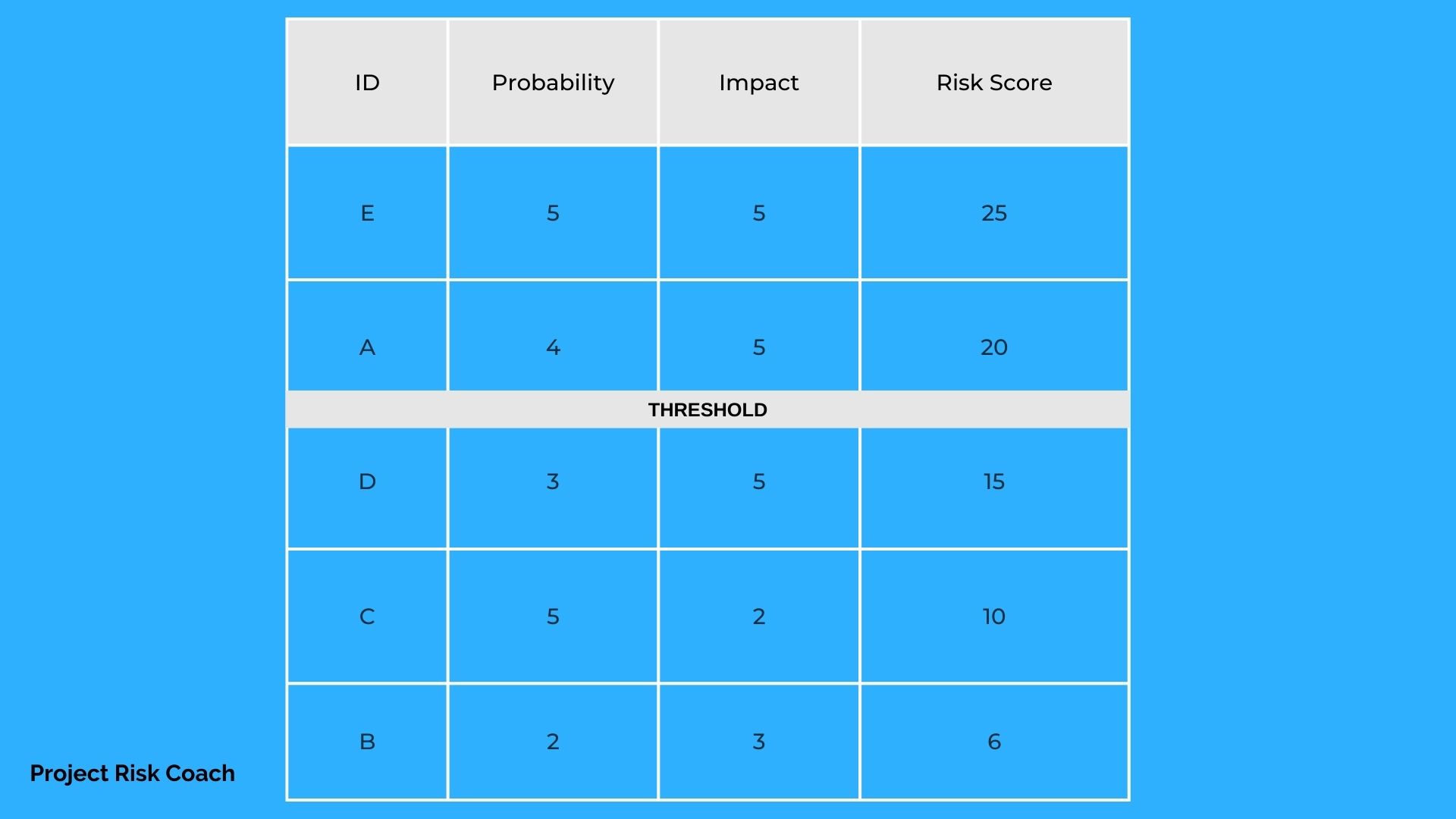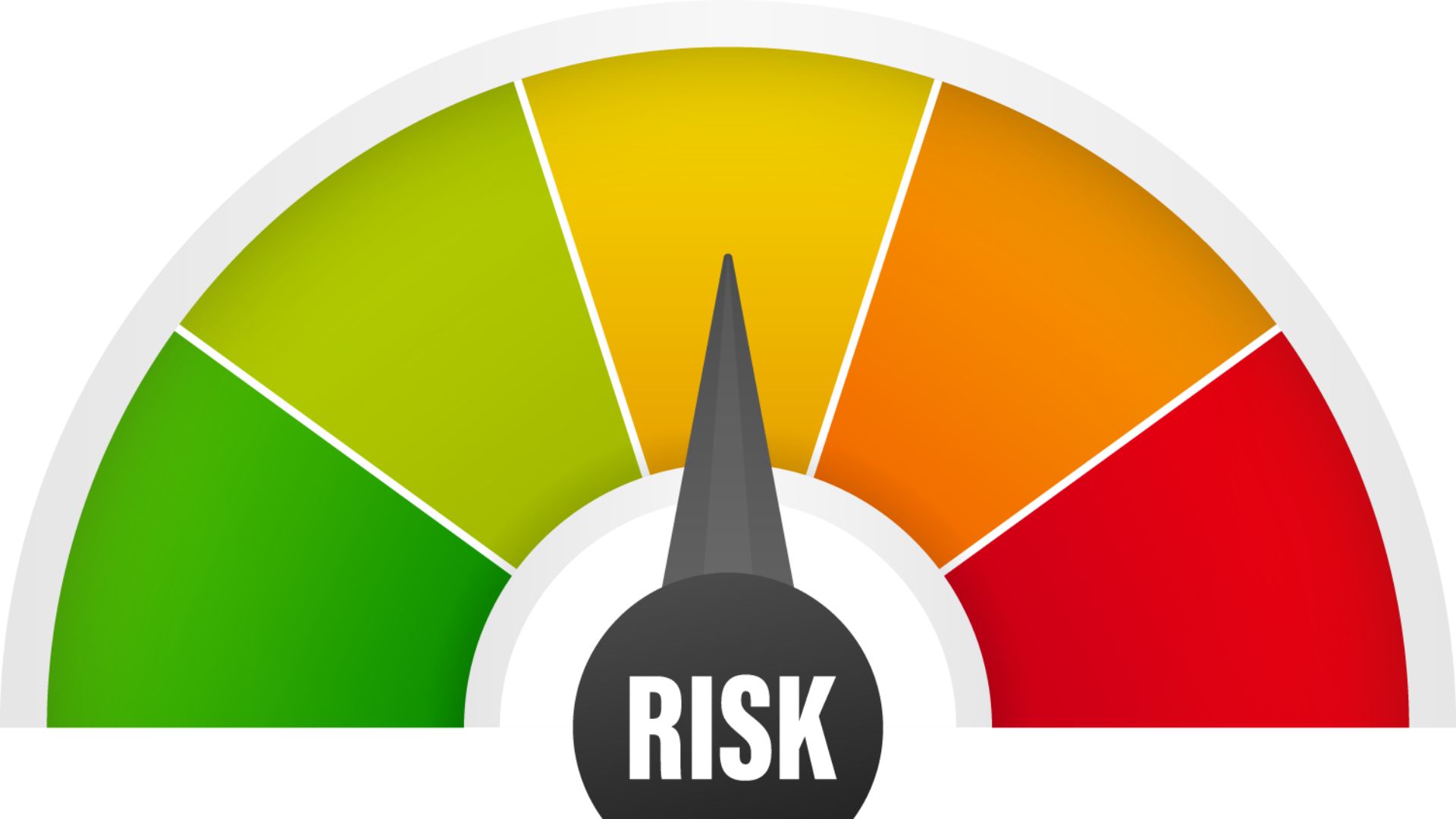In everyday life, a threshold is a strip of wood or stone that forms the bottom of a doorway. And we cross that threshold to enter a room. Projects have thresholds that we may cross too. In this article, we will explore what a risk threshold is, why it matters, and look at some examples.

What is Risk?
The PMBOK® Guide, Seventh Edition defines risk as an uncertain event or condition that, if it occurs, has a positive or negative effect on one or more project objectives.
So, a risk may cause a positive effect. We call these risks opportunities.
A risk may also cause a negative effect. We refer to these risks as threats.
Learn more about project risk in my article What is Project Risk?
What is Risk Threshold?
A risk threshold is the measure of acceptable variation around an objective that reflects the risk appetite of the organization (PMBOK® Guide, Seventh Edition). Another way to think about risk threshold is the point at which risk becomes unacceptable.
Keep in mind thresholds may be upper and/or lower limits. A doctor may tell a patient with a weight problem that their ideal weight should be between 130 and 150 pounds.
Imagine a project manager who has engaged the stakeholders and performed quantitative risk analysis, resulting in a risk exposure of $80,000. The project manager is challenged to reduce the exposure to $50,000 and keep the exposure between $40,000 and $60,000.

Risk Threshold Examples
We sometimes say, "The husband swept his bride off her feet and carried her over the threshold into their home." Notice that the threshold is a defined line of demarcation.
In project management, we can use project thresholds to define clear lines of what matters and what matters less. A project manager may use a threshold for qualitative risk scores for individual risks. For example, any risk with a risk score of 20 or higher (on a scale of 1 to 25) is an urgent risk and requires the assignment of a risk owner.
Another way to use a threshold is for quantitative risk exposure for the overall project risk. For example, a project manager may be given a budget of $200,000 with a contingency reserve of 10%. Therefore, he may not exceed $220,000.
The Relationship of Risk Appetite and Risk Threshold
Risk appetite is “the degree of uncertainty an organization or individual is willing to accept in anticipation of a reward” (PMBOK® Guide, Seventh Edition).
For example, a risk appetite may include modest appetite for budget increases.
The project manager may work with the project sponsor to establish a risk threshold that supports and aligns with the risk appetite. Suppose a risk threshold of seven percent. That is to say, the project manager must not exceed $107,000 for a $100,000 budget.
So, why does risk threshold matter? It allows the project manager to engage with the appropriate stakeholders and reach agreement on ways to support the risk appetite, the amount and type of risks that are acceptable. A defined and agreed-upon threshold helps the project manager to meet the expectations of the stakeholders.
Learn more about project risk appetite in my article The What, Why, & How of Risk Appetite
